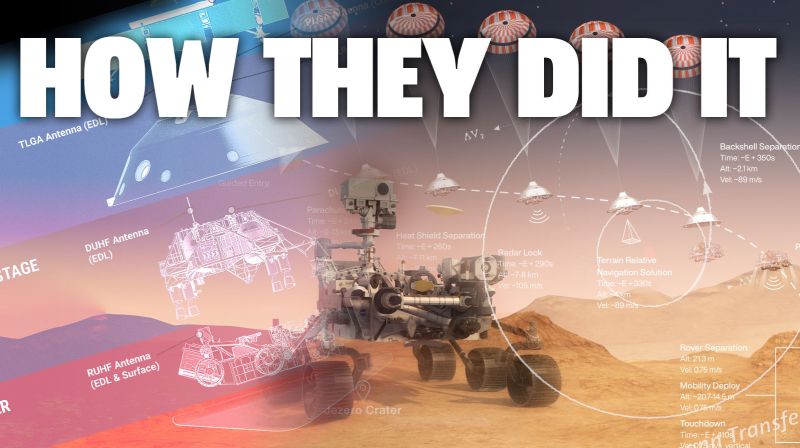There was a lot of enthusiasm surrounding Mars arrival of Perseverance rover, our latest robotic interplanetary explorer. Eager to capitalize on this excitement, NASA JPL released a lot of information to satisfy curiosity of the general public. But making that material widely accessible also meant leaving out many technical details. People who crave just a little more can head over to How NASA’s Perseverance Landed On Mars: An Aerospace Engineer Breaks It Down In Fascinating Detail published by Jalopnik.
NASA JPL’s public materials mostly explained the mission in general terms. Even parts with scientific detail were largely constrained for a target audience of students K-12. Anyone craving more details can certainly find them online, but they would quickly find themselves mired in highly technical papers written by aerospace engineers and planetary geologists for their peers. There is a gap in between those extremes, and this write-up slots neatly in that gap. Author [Brian Kirby] is our helpful aerospace engineer who compiled many technical references into a single narrative of the landing, explained at a level roughly equivalent to undergraduate level math and science courses.
We get more details on why the target landing site is both geologically interesting and technically treacherous, requiring development of new landing smarts that will undoubtedly help future explorers both robotic and human. The complex multi-step transition from orbit to surface is explained in terms of managing kinetic energy. Condensing a wide range of problems to a list of numbers that helps us understand why, for example, a parachute was necessary yet not enough to take a rover all the way to the surface.
Much of this information is known to longtime enthusiasts, but we all had to get our start somewhere. This is a good on-ramp for a new generation of space fans, and together we look forward to Perseverance running down its long and exciting to-do list. Including flying a helicopter, packing up surface samples of Mars, and seeing if we can extract usable oxygen from Martian atmosphere.
















Selfie with Martian should be part of that list.
> if we can extract usable oxygen from Martian atmosphere.
It is funny, but for me real question should be can we extract usable quantities of hydrogen on Mars (for rocket fuel).
With enough energy you can extract oxygen from the martian regolith, oxygen should not be a problem. Simple easy access to hydrogen (or water) is a much harder problem.
Do not understand why the writer refers to the vehicle as “an incredible Rube Goldberg Machine”.
What features of the re-entry and landing mechanics were not necessary or intentionally too complex?
The more I learn about the imagination, planning and engineering behind this landing the more impressed I am at the achievement. Just one chance to get it right. Kudos on an extremely well written description of the planning (much better than any other I have read).
Nice writeup, but the heady juxtaposition of pounds and kilograms had me mentally reaching for a slide rule.
abjq, it’s the best Jalopnik article I’ve ever read. But yeah, the mix of miles/kilometres and kilograms/pounds was jarring. At least the author minimised the use of F150 [pickup trucks] as a unit of measurement.
Surely, in an internal level, NASA uses the metric system by now? Did the author take it upon himself to make the conversions?
I don’t want to turn this into another “metric system” conversation though. That issue aside, it’s a great writeup.